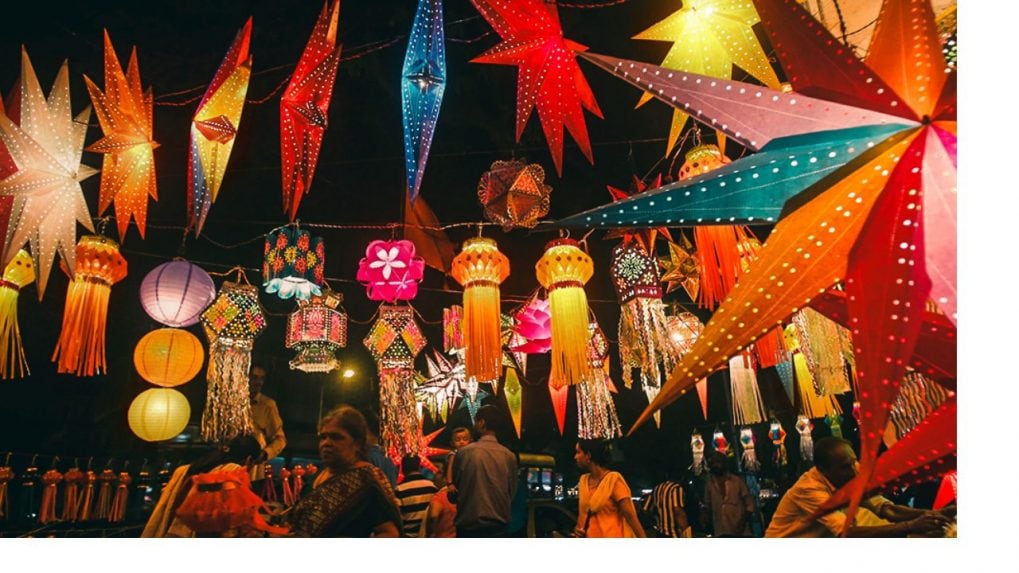Digital
Why OpenAI is hiring 100 ex-bankers: Inside the ChatGPT-maker's secret project to automate Wall Street's grunt work

India's festive season has always been a time of celebration, big-ticket purchases, and once-in-a-year bargains. But over the last decade, the festival calendar has also become the single most important moment for India’s e-commerce sector. The question on every consumer’s mind this year is not whether to buy, but when and where to buy to unlock the best possible deals.
A recent report by consulting firm Redseer estimated that India’s festive online sales touched ₹60,700 crore in gross merchandise value (GMV) in the first week of the 2025 season — a 29 percent year-on-year growth. That opening week alone accounted for the lion’s share of festive e-commerce sales, proving once again that timing is everything.
So how can consumers make the most of this high-stakes shopping window? Here’s a practical playbook.
The Early-Bird Advantage: Why the First Week Matters
For years, platforms like Flipkart and Amazon have trained shoppers to expect blockbuster deals in the very first week of their flagship festive sales. This year was no different: Redseer data shows that most of the GMV was concentrated in the initial week starting September 22, as platforms stacked discounts and inventory for the launch phase.
For consumers, this means two things:
Electronics and appliances see their steepest discounts in the first 3–4 days.
Fashion and lifestyle categories often sustain deals longer, but sizes and stock deplete fast.
The takeaway? If you’re shopping for high-value items like smartphones, laptops, or home appliances, the opening week is the safest bet.
Flipkart vs Amazon vs Myntra: Who Wins Where?
India’s festive sales have turned into a battleground between Flipkart and Amazon, with Myntra and other vertical players adding niche flavor. According to a Storyboard18 report, Flipkart retained its market leadership during the opening week with 48 percent GMV share, followed by Amazon at 32 percent. Myntra and other verticals accounted for the rest.
Flipkart: Known for electronics, smartphones, and value-driven deals. Its “Big Billion Days” is designed for high-volume, flash-style shopping.
Amazon: Stronger in premium products and appliances, leveraging Prime and brand tie-ups.
Myntra: Dominates fashion, especially festive clothing and accessories.
For consumers, it makes sense to cross-check pricing across platforms — because exclusive brand tie-ups often mean one platform has the lowest price for a specific product.
Bank Offers, EMI Schemes and BNPL: The Real Deal-Makers
Discounts are only half the story. In 2025, bank offers and buy-now-pay-later (BNPL) schemes are doing the heavy lifting.
Platforms have partnered with major banks like SBI, HDFC, ICICI and Axis to provide instant 10–15 percent discounts on credit and debit cards. For higher-ticket items, no-cost EMI schemes stretch affordability while preserving cash flow.
The rise of BNPL has also been notable. With providers like ZestMoney, Simpl and LazyPay, consumers can split payments without committing to long-term EMIs. While this adds flexibility, financial planners warn against overspending simply because credit is easier.
Smart play: Stack a bank discount with a platform coupon and an exchange offer. On certain SKUs, this combination delivers effective price cuts of 25–30 percent, even if the headline discount looks smaller.
Category Deep-Dive: When to Buy What
Not all categories behave the same way during festive sales. Here’s a breakdown for savvy shoppers:
Smartphones and Electronics: Best bought in the first 72 hours. Exchange bonuses and flash deals are deepest early on.
Large Appliances (TVs, refrigerators, washing machines): Discounts sustain for the first 7–10 days, but premium models often sell out in week one.
Fashion & Lifestyle: Deals run longer, but size availability drops sharply after the first few days. Buy staples early; experimentals can wait.
Home & Furniture: Prices are steady across the season, but delivery slots get blocked early. Book ahead if you need items before Diwali.
Groceries & Daily Essentials: Offers are staggered throughout the season. Subscription packs and bulk deals are worth locking in early.
The Psychology of “Deal FOMO”
E-commerce platforms rely heavily on “deal FOMO” (fear of missing out). Timed flash sales, countdown clocks and “only 2 left” nudges are meant to drive urgency.
Consumers need to be aware of this psychology. A good strategy is to research wish-list products 2–3 weeks before the festive window, track price histories on comparison apps, and set personal cut-offs. This prevents impulse buys triggered by urgency cues.
Regional & Offline Dynamics
While e-commerce dominates the headlines, offline retail is far from quiet. Reports from the Confederation of All India Traders (CAIT) and retail associations suggest strong footfalls in physical stores during Navratri and Dussehra, especially in tier-2 and tier-3 cities. Many consumers prefer buying jewelry, ethnic wear, and festive food hampers offline.
Hybrid strategies — browsing in-store but checking final price online — are becoming common. For big-ticket items like gold and vehicles, offline still leads.
Checklist: How to Shop Smart This Festive Season
Research Early: Compare prices two weeks before sales begin.
Prioritize Week One: Buy electronics and appliances early; don’t wait.
Stack Offers: Combine bank discounts, exchange schemes and coupons.
Cross-Check Platforms: Don’t assume uniform pricing — one platform may have exclusives.
Control FOMO: Track price history and set a personal cut-off.
Book Deliveries Early: Furniture, appliances and high-demand products face delivery delays.
Keep EMI in Check: Don’t stretch finances just because BNPL and credit are available.
Why Timing Is the Biggest Hack
The big lesson of 2025’s festive sales is simple: timing trumps everything else. Data shows that India’s consumers continue to front-load spending in the very first week, and platforms design their campaigns around that urgency.
For shoppers, that means being prepared ahead of the season — shortlisting products, planning finances, and knowing which day to hit “buy.” Done right, this turns India’s biggest shopping festival into a genuine value unlock, not just an emotional splurge.
In a wide-ranging interview with Storyboard18, Sorrell delivers his frankest assessment yet of how the deal will redefine creativity, media, and talent across markets.